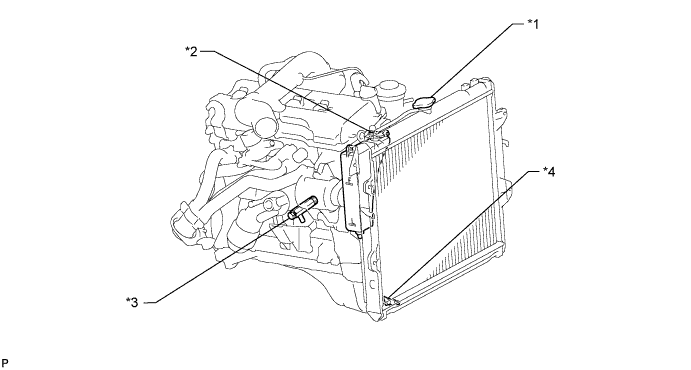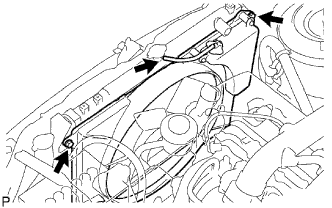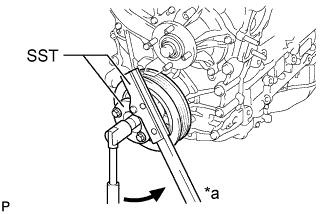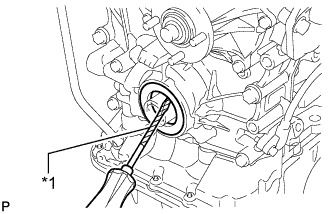Front Crankshaft Oil Seal -- Removal |
| 1. REMOVE NO. 1 ENGINE UNDER COVER |
| 2. DRAIN ENGINE COOLANT |
- CAUTION:
- Do not remove the radiator cap while the engine and radiator are still hot. Pressurized, hot engine coolant and steam may be released and cause serious burns.

| *1 | Radiator Cap | *2 | Reservoir Cap |
| *3 | Cylinder Block Water Drain Cock Plug | *4 | Radiator Drain Cock Plug |
Loosen the radiator drain cock plug.
Remove the radiator cap and drain the coolant.
- HINT:
- Collect the coolant in a container and dispose of it according to the regulations in your area.
Loosen the cylinder block water drain cock plug and drain the coolant from the engine.
| 3. DISCONNECT RADIATOR HOSE INLET |
Disconnect the radiator hose inlet from the radiator.
| 4. REMOVE FAN SHROUD |
 |
Disconnect the reservoir hose from the upper radiator tank.
Loosen the 4 nuts holding the fluid coupling fan.
Remove the fan and generator V belt (HILUX_TGN26 RM000000YMP01OX_01_0001.html).
Remove the 2 bolts holding the fan shroud.
Remove the 4 nuts of the fluid coupling fan, and then remove the shroud together with the coupling fan.
- NOTICE:
- Be careful not to damage the radiator core.
Remove the fan pulley from the engine water pump.
| 5. REMOVE CRANKSHAFT PULLEY |
Using SST, hold the crankshaft pulley and loosen the pulley bolt until 2 or 3 threads are screwed into the crankshaft.
- SST
- 09213-54015(91651-60855)
09330-00021
Text in Illustration *a Hold 
Loosen
 |
Using SST and the pulley bolt, remove the crankshaft pulley.
- SST
- 09950-50013(09951-05010,09952-05010,09953-05010,09954-05021)
- HINT:
- Apply lubricant to the threads and end of SST.
 |
| 6. REMOVE FRONT CRANKSHAFT OIL SEAL |
Using a screwdriver, pry out the oil seal.
Text in Illustration *1 Protective Tape - NOTICE:
- Do not damage the surface of the oil seal press fit hole or the crankshaft.
- Check the crankshaft for damage after removing the oil seal. If the crankshaft is damaged, smooth the surface with 400-grit sandpaper.
- HINT:
- Tape the screwdriver tip before use.
 |